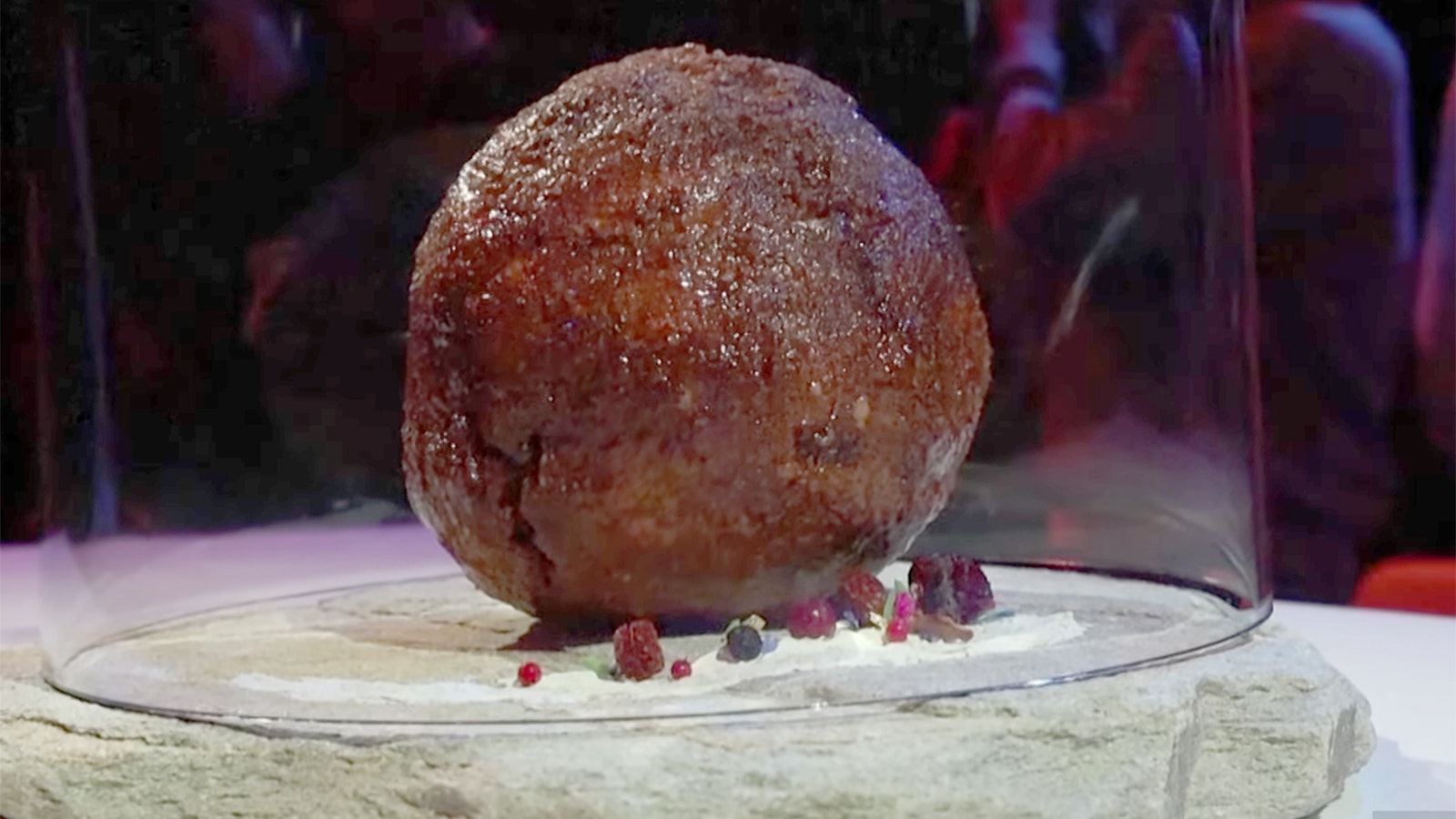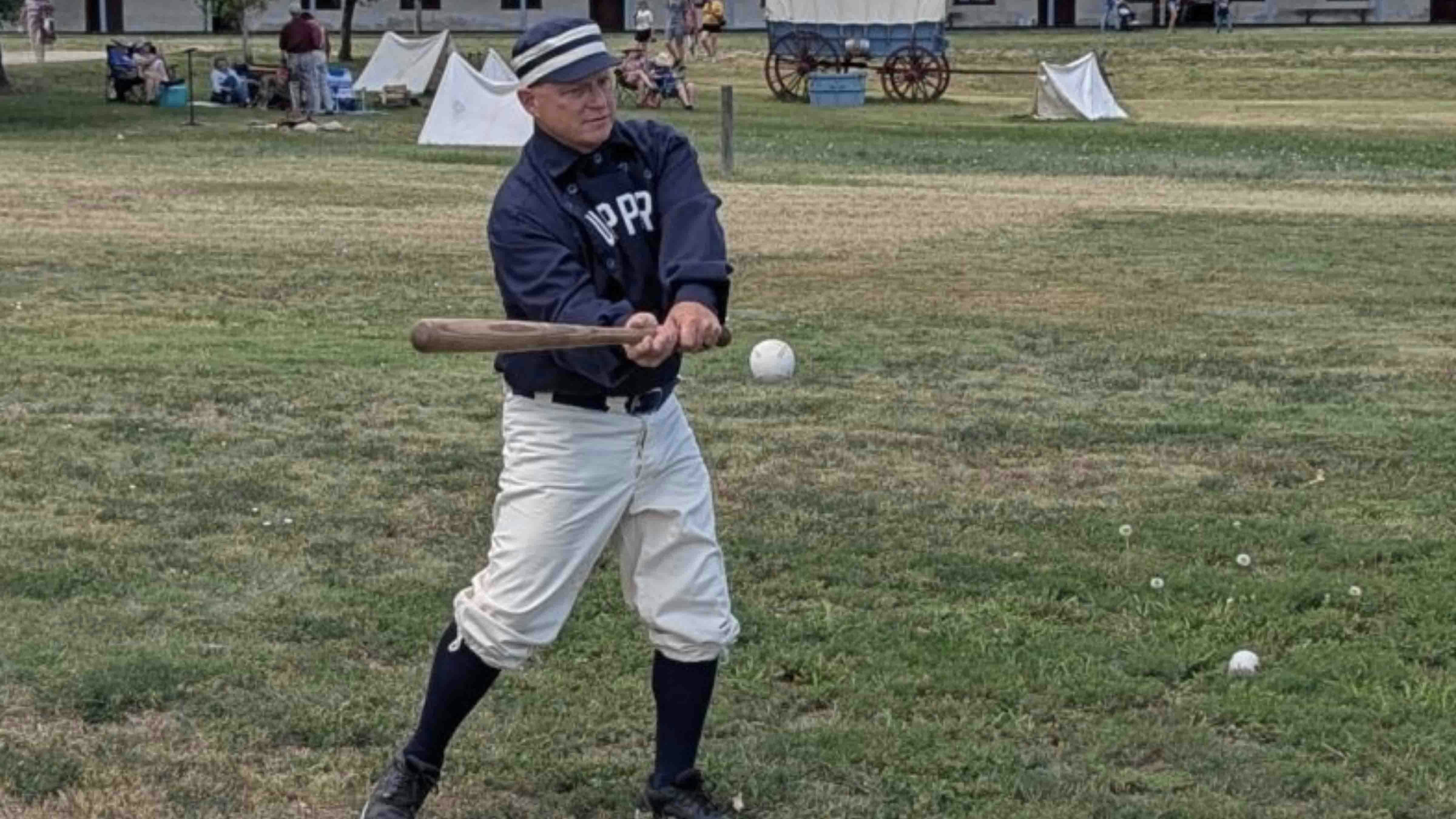At least one of Wyoming’s extinct mega-beasts could be back on the menu, and a University of Wyoming chef said he already has a recipe ready to make up some mammoth meatball subs.
Sadly, however, modern humans might not ever get to feast on a facsimile of another iconic extinct critter: Wyoming’s official dinosaur, the triceratops.
Mathew Branson of Laramie said he was thrilled with the recent announcement that “mammoth meatballs” were the result of research into the genes of the ancient beasts. He’s an executive chef with UW’s Residence Life and Dining Services.
“I’m like joking with my staff, ‘You just wait and see, we’ll be cooking velociraptors soon or maybe some steaks from the Loch Ness Monster,’” Branson told Cowboy State Daily.
Sorry, No Bronto Burgers
Vow, an Australian cultivated meat company, recently announced that it has successfully fabricated “mammoth meatballs.”
No, they didn’t find a secret herd of mammoths to hunt. Instead, they used a combination of lab-grown sheep meat and mammoth myoglobin genes. That’s a type of gene found in the muscle tissue of vertebrates.
So, if they can do that with mammoths, why not triceratops or other ancient creatures?
That’s not likely because of lack of the necessary raw materials, professor Mark Clementz, head of UW’s Department of Geology and Geophysics, told Cowboy State Daily.
“The interest in mammoth genetics is growing, primarily because we have more material being discovered in the tundra as permafrost is melting,” he said, referring to reasonably well-preserved mammoth carcasses that have been discovered in recent years.
“I'm not sure if I see the need to create a mammoth meatball, but I am excited by the research this is promoting,” he added.
But there might not be any such luck when it comes to dinosaurs, Clementz said.
“Regarding the possibility of doing the same for other extinct megafauna, it would require the recovery of ancient DNA from specimens,” he said. “So far, this has been limited to geologically young species (roughly 1 million years or less) and mostly those preserved under cold, dry conditions, which promotes DNA preservation.
“While some labs claim to have found fragments of proteins from older species (even some dinosaurs), there isn't enough evidence yet to support its original and of sufficient quality for this type of application,” he added. “The closest we can get to a triceratops meatball right now is sampling some of their closest relatives from your local poultry farmer.”

Munching On Mammoth Nothing New Here
If Branson gets the chance to whip up hearty helpings of mammoth, he’d be reviving a longstanding tradition in these parts.
It was the pursuit of mammoths that brought the first humans – Paleo-Indians called “the Clovis People” – to what would become Wyoming. They arrived 13,000-15,000 years ago, said Damian Kirkwood, who manages the Department of State Parks and Cultural Resources cultural records office on the University of Wyoming campus.
The Clovis People used a technique called flintknapping to fashion obsidian and other suitable stones into near-razor sharp spearheads, which they used to kill the lumbering, wooly breasts.
Tasty Possibilities
While the Clovis People were limited to roasting their kills over open fires, Branson said bringing out the best in mammoth dishes would come down to the right herbs and spices, as well as side dishes.
“I would use a lot of native herbs, such as sage, to keep that Wyoming tradition,” he said.
A succulent, crunchy side, such as onion rings, would be the ideal final touch, he added.
As a cooking professional, Branson said he’s excited to see what researchers come up with next, even if dinosaurs don’t end up on the menu after all.
“It’s a good bet to trust the science on that,” he said. “Everybody’s always looking for exotic food or a new food trend. Us as humans, we’re always adapting to things.
And he might not be limited to stocking his kitchen with old meats made new again, he added.
“Next thing you know, they’ll find ways to start growing prehistoric spices and herbs,” Branson said.
Chef Mathew Branson’s Mammoth Meatball Subs
Mammoth Meatball
- 1 pound lean ground mammoth
- ½ cup saltine crackers crumbled
- 1 egg
- 1 teaspoon chopped sage
- ½ teaspoon chopped rosemary
- ½ teaspoon onion powder
- ½ teaspoon garlic powder
- ¼ teaspoon Kosher salt
- ¼ teaspoon black pepper
Mix all ingredients well form into 2oz balls and set aside
Heat 1 tablespoon oil in cast iron skillet and place mammoth meatball in and sear on all sides. Remove seared balls and set aside. In same skillet add:
- 1 cup wild mushrooms
- 1 cup sliced onions
Sautee in drippings from the mammoth meatballs. When the onion caramelizes, then add 4 cups beef demi-glace. Place balls back in pan and simmer.
Mammoth Sub
When the balls have been simmering and are at 155F internal temperature, place about 3 to 4 per hoagie and drizzle sauce over. Add a large pinch of shredded gruyere cheese and sprinkle of crispy onion (Frenches).
Serve with a cup of the pan sauce to dip as needed, and with a side of deep-fried mushrooms or onion rings.





